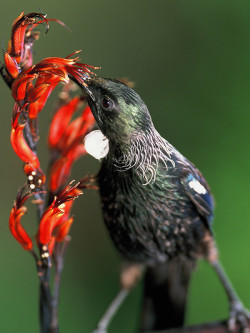Regional roles and policies
There are established responsibilities and a designated policy approach for managing biodiversity in Canterbury/Waitaha.
 Roles and responsibilities
Roles and responsibilities
While the Department of Conservation/Te Papa Atawhai has the primary statutory responsibility for the management of indigenous species, the Canterbury Regional Policy Statement (CRPS) sets out our Resource Management Act (RMA) responsibilities for the management of habitat for indigenous biodiversity.
Territorial authorities (which include district councils and the Christchurch City Council) are responsible for managing terrestrial (land) biodiversity, as well as the biodiversity values in artificial watercourses and drains (for example, stock water races and drains).
Under the current division of responsibility in the CRPS, we are responsible for managing indigenous biodiversity in wetlands, the coastal marine area, and freshwater ecosystems. However, joint responsibility with the district and the Christchurch City Council may exist if significant indigenous vegetation within these areas is identified in a district plan, or if there are rules that relate to vegetation clearance within these areas.
Current policy approach
Regional Policy Statement
Chapter 9 of the CRPS sets out criteria for determining the significance of indigenous vegetation or habitats. If these criteria for significance are met, the CRPS requires these areas to be protected. Chapter 9 also sets out priorities for protection, which includes areas of indigenous vegetation associated with sand dunes and wetlands.
Chapter 5 of the CRPS also provides direction to district plans to avoid, or minimise as far as practicable, the risk of wilding tree spread through controls on the management of new exotic forests. Wilding tree spread can impact a range of values including indigenous biodiversity by out-competing and smothering indigenous plant communities.
We are also responsible for producing and implementing a Regional Pest Management Plan under the Biosecurity Act which manages both animal and plant past pests in Waitaha.
National Environmental Standards for Plantation Forestry
The Resource Management Forestry Regulations 2017 National Environment Standards for Plantation (NES-PF) set out controls for managing plantation forestry.District and regional plans can impose more stringent controls to manage plantation forestry than the NES-PF in limited circumstances, which include providing for the protection of Significant Natural Areas (SNAs) or giving effect to an objective developed to give effect to the National Policy Statement on Freshwater Management (NPS-FM).
The Canterbury Land and Water Plan (CLWRP) includes several controls on plantation forestry activities that are more stringent than the regulations in the NES-PF. These relate to the concentration of sediment discharges into waterbodies and the requirement for resource consent for tree planting in flow-sensitive catchments, īnanga spawning habitats, iwi values, wetlands, critical habitats and salmon spawning sites.
Regional Plans
The CLWRP manages effects on indigenous biodiversity in freshwater environments such as lakes, rivers and wetlands. The Regional Coastal Environment Plan (RCEP) manages the effects of indigenous biodiversity in the coastal marine area. Resource consents are required under these plans for most activities undertaken in freshwater and marine environments. The resource consent process assesses the effects and mitigation of specific activities on indigenous biodiversity.
District Plans
District Plans manage the effects on indigenous biodiversity in terrestrial (dryland) environments. Resource consents are required for activities such as earthworks and vegetation clearance that cause adverse effects on areas of significant indigenous biodiversity.
